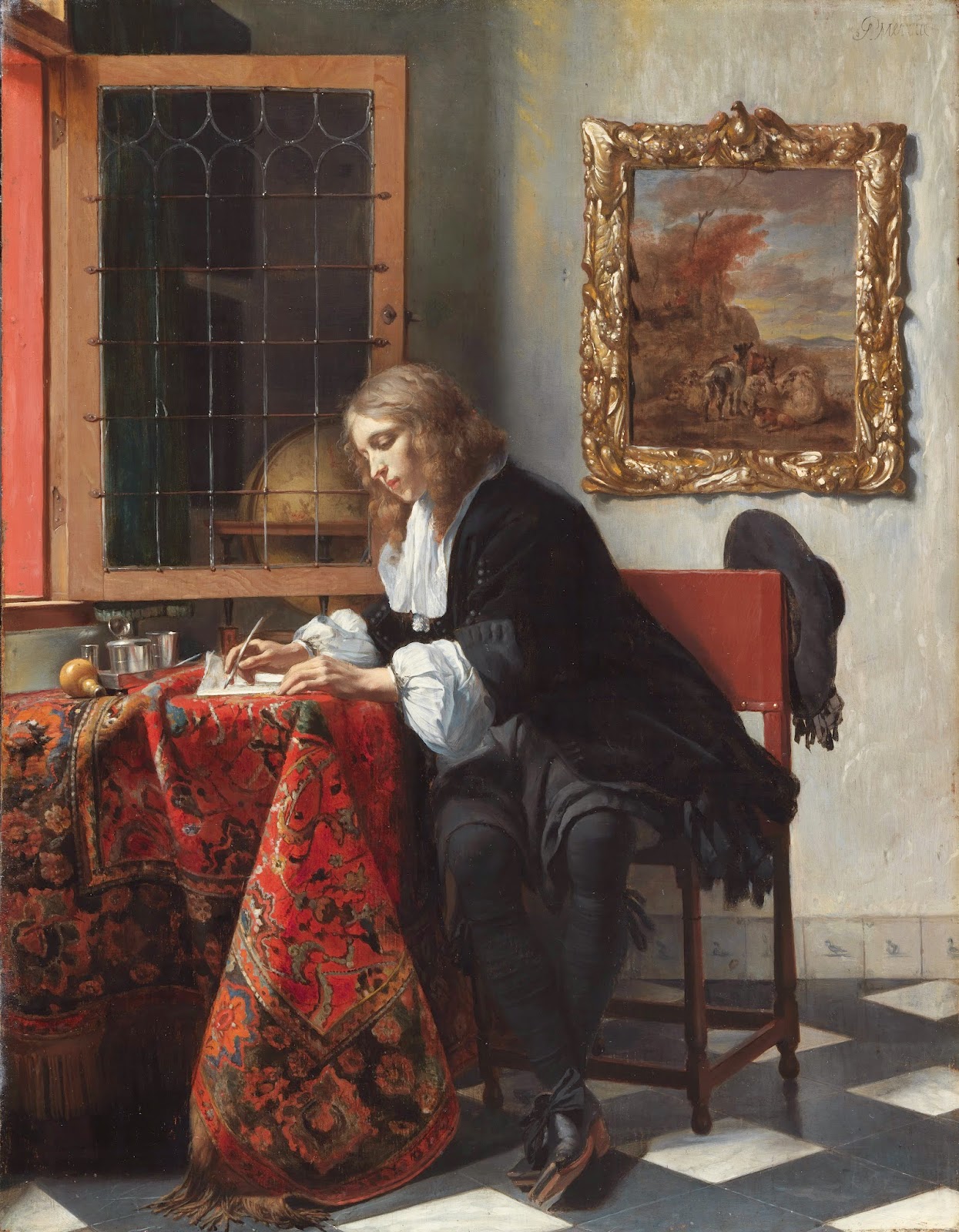 |
| Sigismonda And The Heart Of Guiscardo by Moses Haughton |
 |
| Woman Writing A Letter by Gerard ter Borch, c. 1655 |
Be critical. It’s seems to be a default system that in every group there
will be things seen as truths, something that everyone does and which is very
easy to take for hard facts. Ask questions! If someone tells you this is the
way to do it, the politely ask why, ask for sources. The same goes for blog
posts and articles online, don’t just take the information for granted. So ask
questions, but ask nicely. People are usually happy to share their sources, but
don’t ask things like “Send me everything you know about XWY”. Get to know the
basics of XWY on your own first. I don’t mind answering “I’m looking into XWY
and I notice you say this or that about it and I wonder where you found that
reference”, but I don’t have the time or inclination to do someone’s complete
research. If you want to buy a period sewing pattern, do a little research on
the pattern company to see what their patterns are based on and what kind of
research has gone into the pattern. There are pattern review sites like The
Great Pattern Review and a Facebook group; Costumer Pattern Review.
Read books. There are tons of good books out there, so a trip to the
library can yield quite a lot. Most of us never get the chance to study extant
garments, but luckily people like Janet Arnold, has done it for us. Such books
give detailed description of extant garments, usually with photographs of it as
well as period paintings that depicts similar clothes.
 |
| Man Writing a Letter by Gabriël Metsu, 1664-66 |
Read first hand sources online. There are several websites that scan
original texts, saving you a trip to the library. For example; Google Books, Internet Archive and Project Gutenberg.
Read peer reviewed papers online. Well-researched papers and articles
can be found at sites like Academia.edu. Some university libraries have free
articles in their catalogues, though you will have to search for them.
 |
| Theophila Palmer Reading Clarissa by Joshua Reynolds, 1771 |
Browse museums online. More and more museums have their collections
available and one can find both extant garments and period paintings there. A
small warning when it comes to extant clothes; if you find something unusual,
you may have found something unique, but it can also be due to something being
re-made. For example, the Victorians were rather notorious in changing 18th
century clothes for costume balls.
Pinterest. A bit of a quagmire, I know. If you pin yourself, try to find
the original source of the pictures if you can. For example, if you find a
pretty gown on Tumblr and it is originally found at Metropolitan Museum, jump
to the Met before you pin. That way you can easily find the original
information later. If you re-pin, take a gander on what the pinner says about
the picture, it may not be the truth. For example, there is a pretty 17th
century gown going round that is said to be an extant gown. However, if you go
to the original source it becomes clear that the gown is actually made for a
theatre production in the 1990’s. Pinterest is really good for sorting pictures
as you can make as many albums you like.
And last; You will make mistakes. You will draw the wrong conclusions.
It’s not a big deal, see it as part of the learning process and be happy that
you have a knowledge bank that is constantly growing.
 |
| Young Woman Reading a Letter by Jean Raoux |
4 comments:
This is wonderful!!!
Thank you for putting it together :)
Research truly is so much fun and it's the best foundation to get to know the people behind the dresses and why they used to wear such fashions. Research means completing the picture around a garment and helping it to come to life again.
Sabine
Sabine: I'm glad you enjoyed it! Absolutely, it gives deoth and understanding. And even if you decide to derive from how something was actually done, knowing what you make difference and why, makes a difference for the better. As opposed to make a choice based on laziness. :)
We're of a similar mind today, hehe! Love this--good basics to get started in the crazy world of costume research. Being critical is truly so important--as you put together all those details into the big picture, it gets easier to look at the common "facts" and ask the right questions!
Wonderful post! And you're so right, it is very much like detective work and a great deal of fun once you get on a roll!
Post a Comment